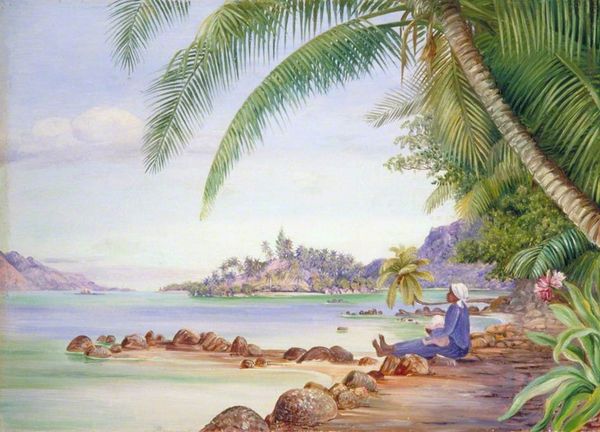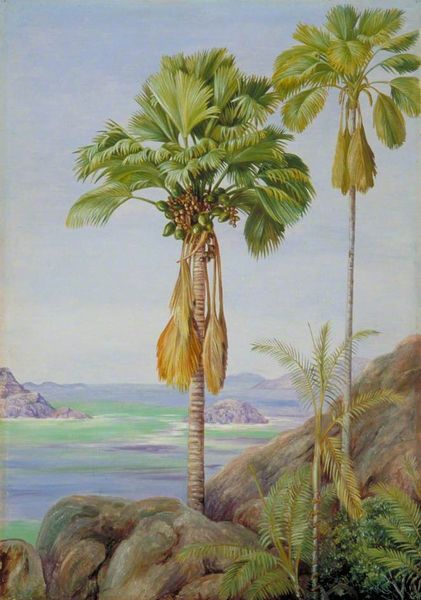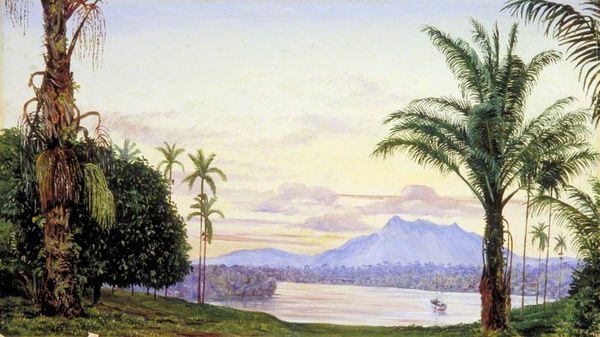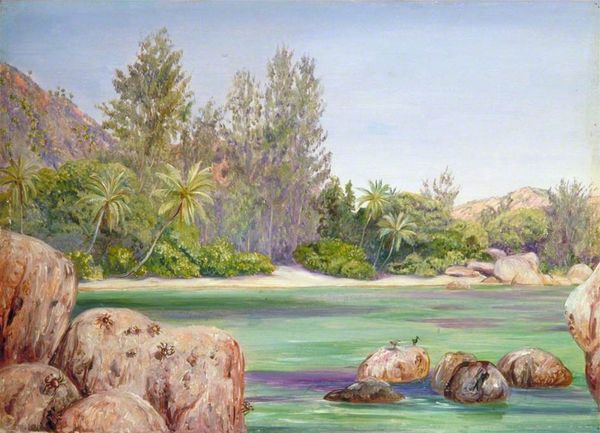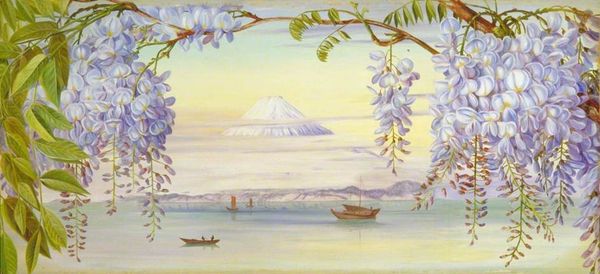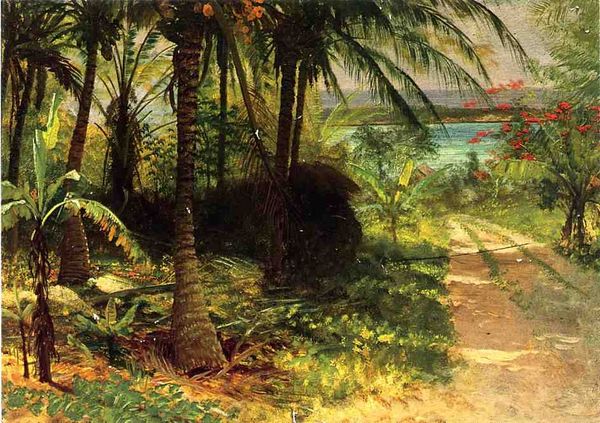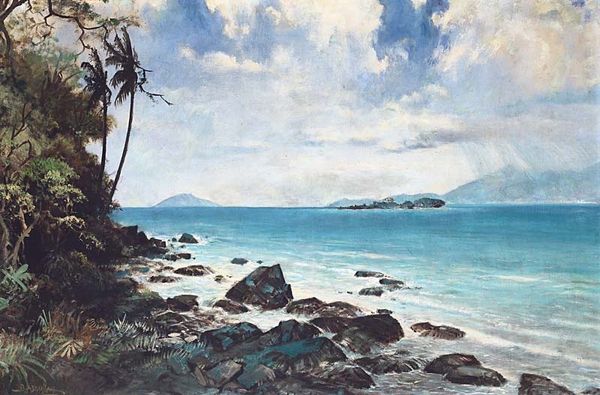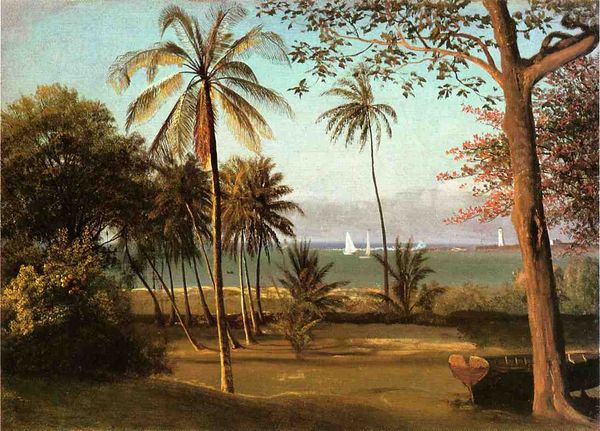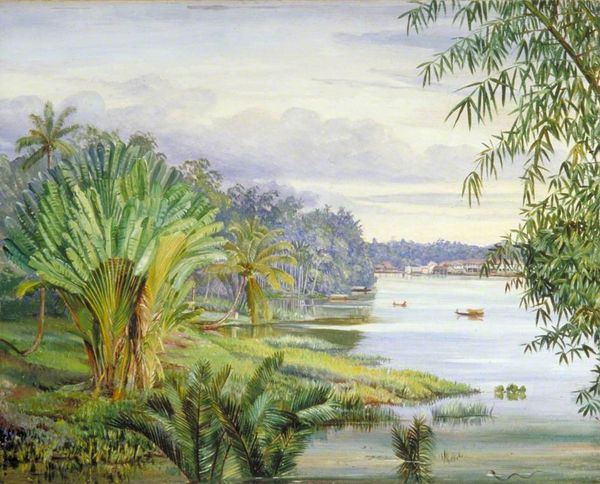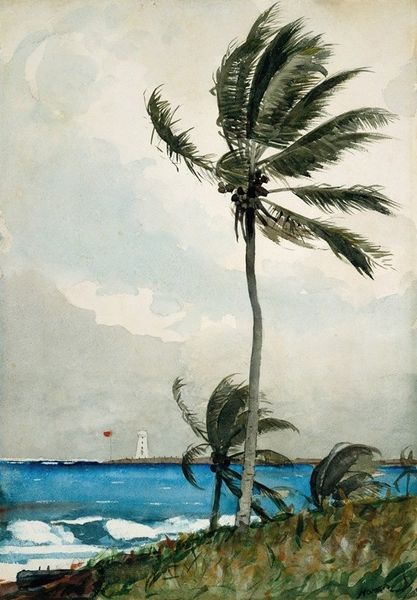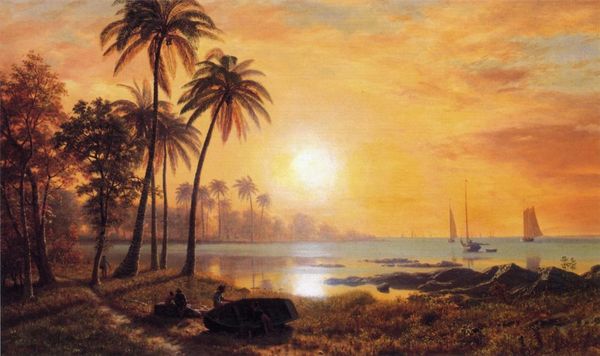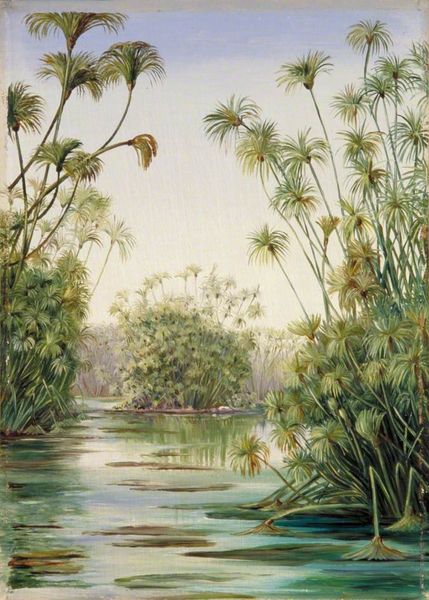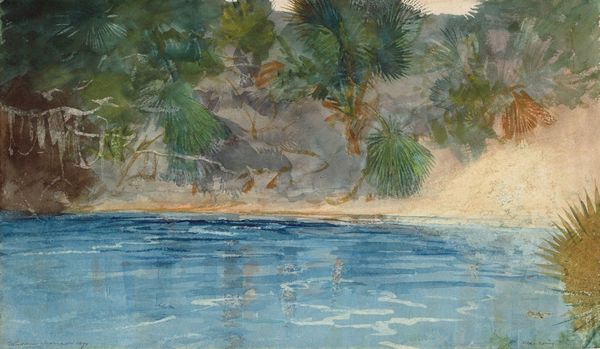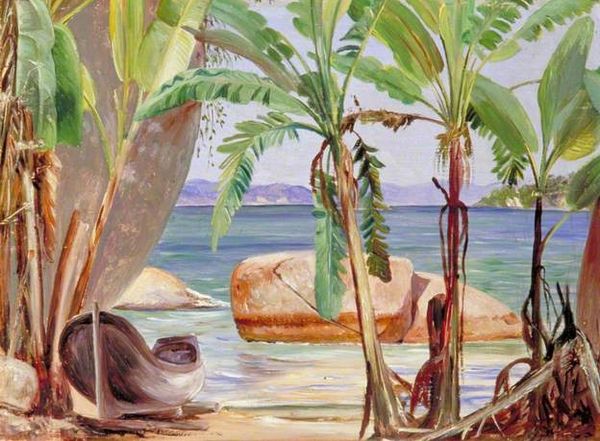
Copyright: Public domain
Curator: Here we have "Palm Trees and Boulders in the Bay of Rio, Brazil," painted by Marianne North in 1873. It’s a lovely example of her dedication to botanical documentation through art. Editor: It's surprisingly muted. Those soft greens and blues give it a tranquil, almost melancholy feel. Not what I'd expect from a landscape of Rio. I’m also struck by the use of watercolour; it is beautifully applied but also carries some heavy orientalist tones. Curator: Absolutely. North traveled extensively, creating a visual record of the plant life in various corners of the British Empire and beyond. These landscapes weren't purely objective records; they were shaped by Victorian sensibilities and the conventions of the era. Editor: And those conventions inevitably dictated the medium. Watercolour makes sense when traveling because it’s a very light and portable kit to carry, but let’s look closely at the details - she's rendering specific species with what I see as painstaking accuracy. But there’s something that appears almost artificial. Are we sure the watercolor isn’t combined with anything else? Curator: Possibly, many of her paintings combine media; this piece can offer insight into the ways these representations contributed to shaping public perceptions of these exotic locales. The controlled brushstrokes speak to the formal artistic training while highlighting the almost scientific recording happening, blurring art and documentation. Editor: Right, and there's a social implication there too. This wasn't simply about personal exploration. North’s work, exhibited at Kew Gardens, played a crucial role in fostering botanical knowledge, disseminating imperial views, and in effect the promotion of this type of natural knowledge, very similar to her male peers. Curator: Precisely. The paintings supported the British Empire’s economic ambitions. They also fostered a kind of colonial exoticism, and the piece on display is very successful in fulfilling all requirements: appealing to London, being useful in botany and showing her skill. Editor: Yes, and thinking about materials, these were created on-site; the production, its materiality is defined by its very use case of traveling, rather than its purpose of imperial and scientific record keeping. Curator: So when we are looking at these types of painting we have to keep the context in mind. It is never just a document, never just botanical truth. Editor: I agree; looking at a seemingly placid scene in watercolors offers insights into empire and craft, travel and society. I learned something new again!
Comments
No comments
Be the first to comment and join the conversation on the ultimate creative platform.
